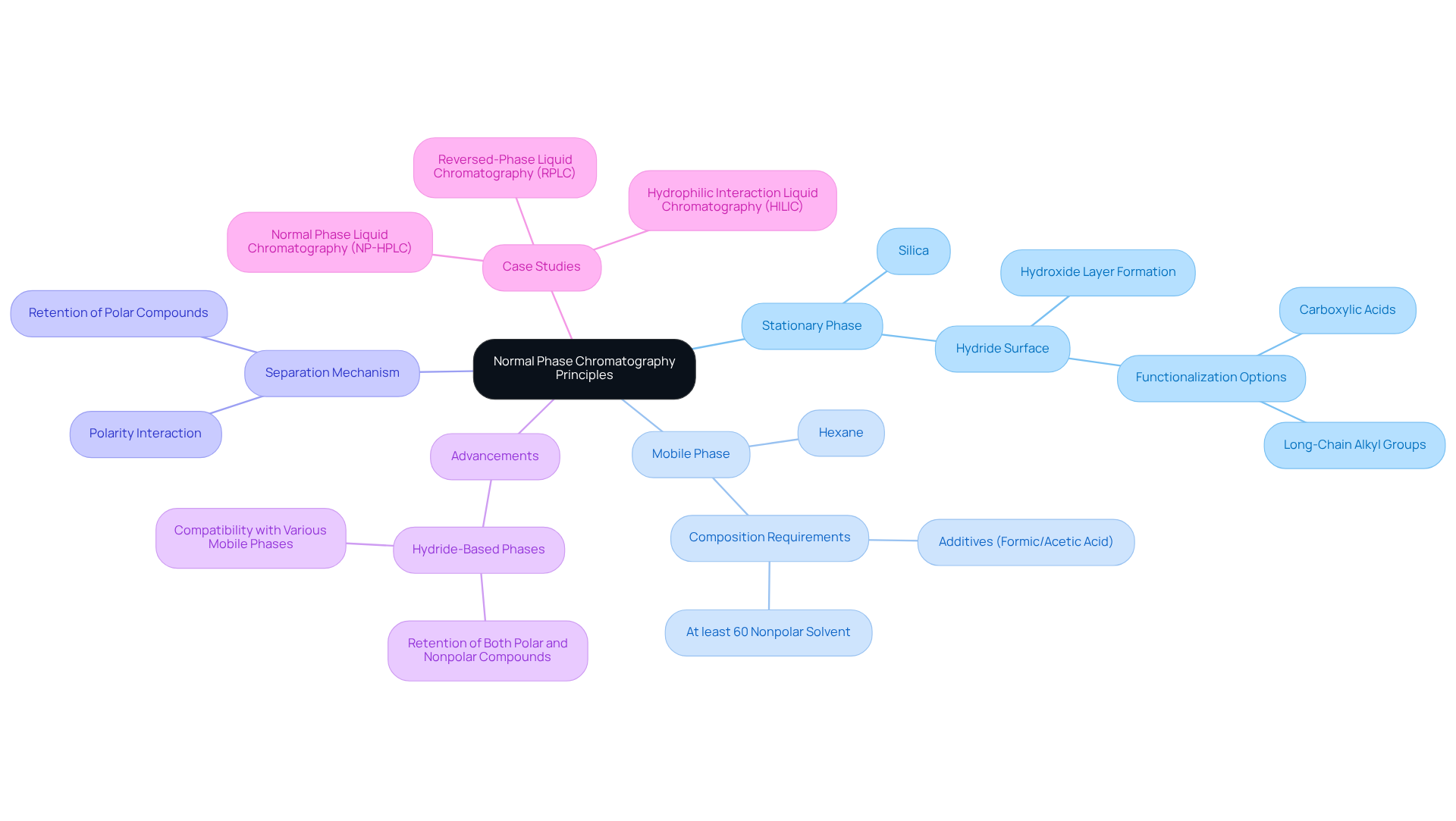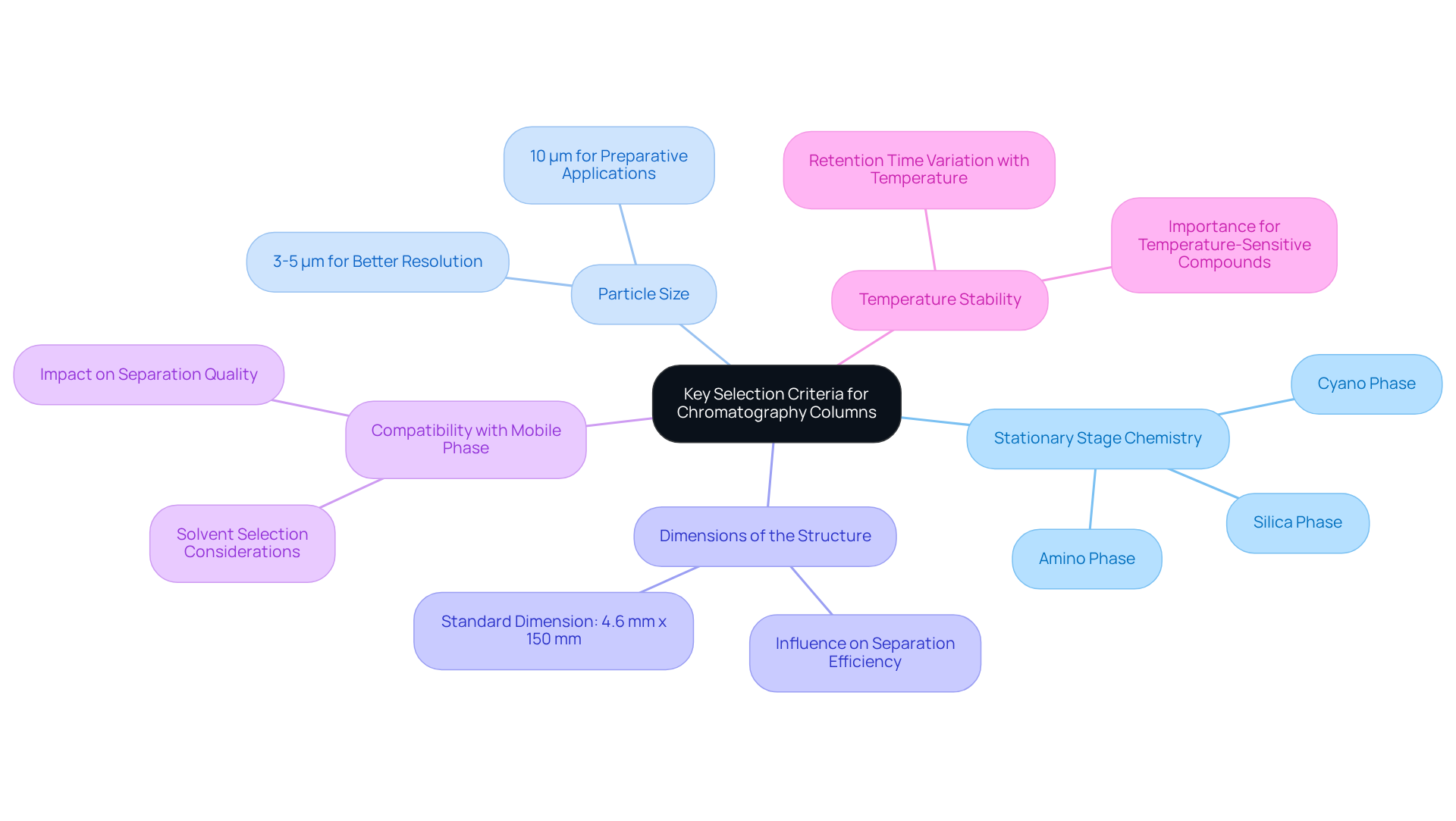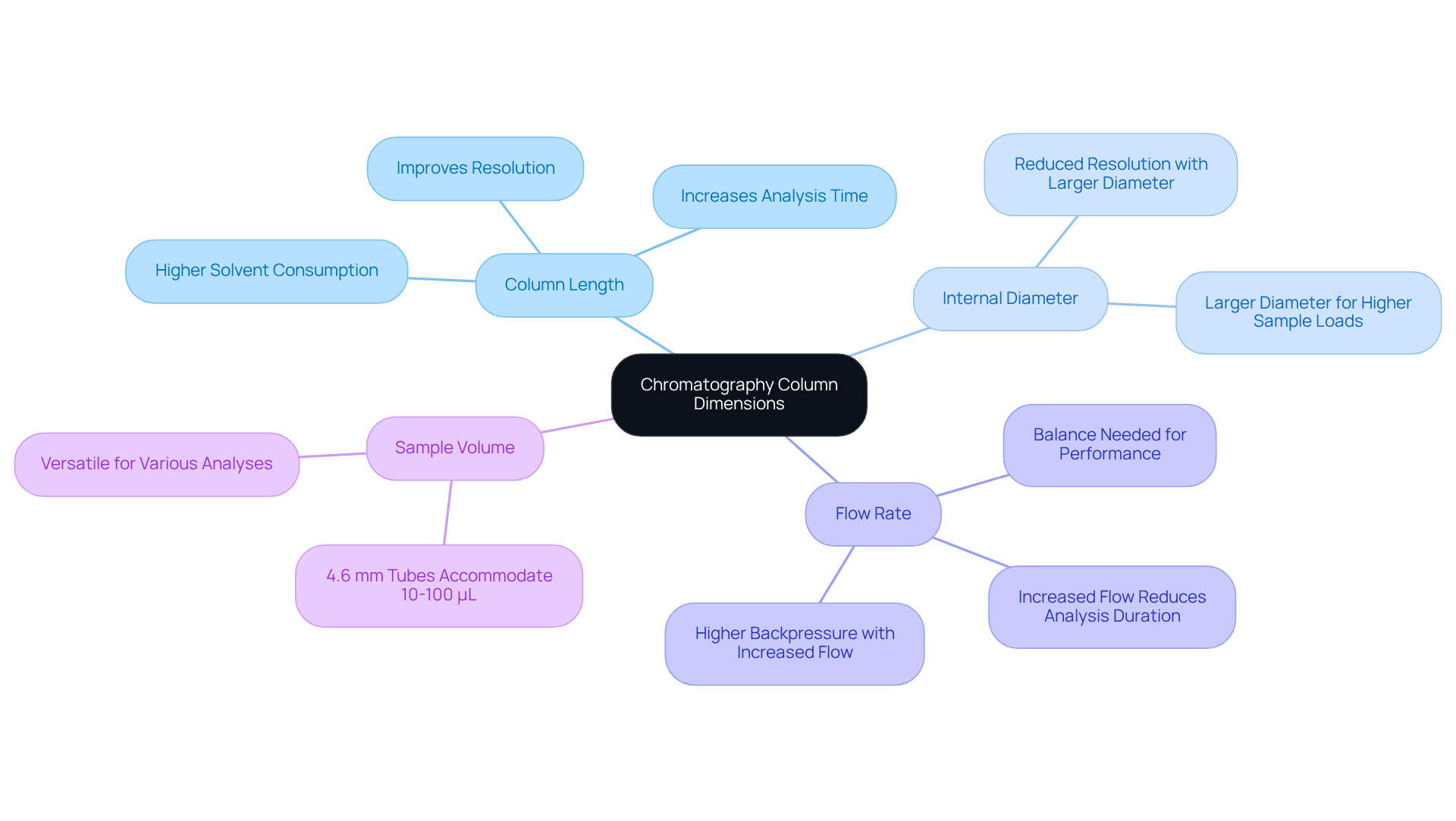Overview
The article delineates the crucial steps for selecting a normal phase chromatography column, underscoring the significance of factors such as stationary phase chemistry, particle size, and column dimensions. Each criterion is explored in detail, illustrating how it impacts separation efficiency and performance.
Furthermore, the article addresses common selection challenges, providing troubleshooting insights to ensure optimal analytical outcomes. This comprehensive approach not only highlights the importance of high-quality scientific instruments but also reinforces the necessity for informed decision-making in laboratory settings.
Introduction
Navigating the intricate world of normal phase chromatography presents a significant challenge, even for seasoned analysts. Its unique capability to separate compounds based on polarity underscores the necessity of selecting the appropriate chromatography column, which is vital for achieving accurate and reproducible results. This guide explores the essential steps and criteria for choosing a normal phase chromatography column, addressing common challenges while offering practical solutions.
How can one ensure that their choice not only aligns with analytical objectives but also enhances separation efficiency in complex mixtures?
Understand Normal Phase Chromatography Principles
The normal phase chromatography column (NPC) is a technique that effectively separates compounds based on their polarity. In a normal phase chromatography column (NPC), the stationary medium is polar—typically silica—while the mobile medium is non-polar, often employing substances like hexane. This arrangement enables polar compounds to interact more strongly with the stationary medium, resulting in slower elution compared to non-polar compounds. Understanding this principle is vital, as it directly influences the choice of supports and solvents utilized in the process.
When examining polar analytes, for instance, a normal phase chromatography column frequently provides superior separation compared to a reversed column, which utilizes a non-polar stationary medium and a polar mobile medium. Recent advancements in NPC, including the development of hydride-based phases, have significantly enhanced its capabilities by allowing for the retention of both polar and nonpolar compounds across various mobile phase compositions.
Case studies have demonstrated that precise control of water content in solvents is essential for optimal performance; even trace amounts can lead to irreproducibility. Familiarity with these concepts will empower you to navigate the complexities of selection and elevate your chromatographic evaluations.

Identify Key Selection Criteria for Columns
When selecting a normal phase chromatography column, considering several key criteria is essential to effectively guide your decision-making process.
- Stationary Stage Chemistry is paramount; select a stationary medium that complements the polarity of your analytes. Common options include silica, amino, and cyano phases, each offering unique properties that can enhance separation efficiency.
- Next, consider Particle Size. Smaller particles, typically in the range of 3-5 µm, generally provide better resolution but may require higher pressure for optimal performance. Conversely, larger particles, such as 10 µm, are often more suitable for preparative applications where throughput is a priority.
- The Dimensions of the Structure also play a crucial role. The internal diameter and length of the column significantly influence separation efficiency and evaluation time. A standard dimension of 4.6 mm x 150 mm is commonly used for analytical applications, balancing performance with practicality.
- Additionally, ensure Compatibility with Mobile Phase. The chosen stationary phase must be compatible with the solvents you intend to use, as this can critically affect the quality of separation achieved.
- Finally, assess Temperature Stability. It is vital to consider the temperature range that the device can withstand, particularly if your analysis involves temperature-sensitive compounds.
By thoroughly assessing these criteria, you can effectively narrow down your options and select a normal phase chromatography column that aligns with your analytical objectives.

Determine Column Dimensions and Length
Careful consideration of several key factors is required when choosing the appropriate dimensions and length for your normal phase chromatography column.
Column Length: Extended sections, such as those measuring 250 mm, typically improve resolution by permitting more interaction time between analytes and the stationary phase. However, this results in longer evaluation time, which can increase by approximately 1.5 to 1.75 times for gradient-temperature programming, along with greater solvent consumption. In contrast, shorter tubes (e.g., 50 mm) enable quicker separations but may compromise resolution, making them appropriate for routine analyses where speed is prioritized.
Internal Diameter: The internal diameter of the structure plays a significant role in performance. Analytical tubes typically have a diameter of 4.6 mm, while preparative ones may be around 10 mm. A larger diameter can accommodate higher sample loads, which is beneficial for preparative applications, but it may also lead to reduced resolution due to broader peaks.
Flow Rate: Enhancing the flow rate is essential and must be consistent with the dimensions of the structure. Increased flow rates can reduce analysis durations but may affect resolution, especially in longer tubes where backpressure rises. Higher backpressure necessitates more robust instrumentation to maintain system integrity. Adjustments in flow rate may be necessary to maintain efficiency and manage backpressure effectively.
Sample Volume: Ensure that the chosen dimensions can accommodate the intended sample volume without compromising separation quality. For instance, a 4.6 mm tube is typically capable of accommodating sample volumes ranging from 10 to 100 µL, making it versatile for various analytical tasks.
By carefully assessing these factors, you can choose a chromatography device that ideally balances resolution and examination duration, customized to fulfill your particular analytical needs. This strategic approach is essential for achieving high-quality results in complex analyses, particularly in pharmaceutical applications where precision is paramount.

Troubleshoot Common Selection Challenges
When selecting a standard chromatography support, several typical challenges may arise. Addressing these issues is crucial for achieving optimal results in your experiments. Here are some essential troubleshooting tips:
- Incompatibility with Mobile Phase: If you encounter poor separation, verify the compatibility of the column with your selected mobile phase. Transitioning to a more suitable solution can significantly enhance outcomes. Notably, a common yet often overlooked effective chromatography practice is to modify liquids, especially water-based solutions.
- Column Obstruction: Heightened back pressure may indicate that the tube is obstructed. To resolve this, flush the tube with an appropriate solvent to eliminate any blockages.
- Poor Resolution: Should you find the resolution lacking, consider adjusting the column length or particle size. A longer column or smaller particle size can greatly improve separation efficiency.
- Baseline Noise: Elevated baseline noise may suggest contamination or insufficient preparation of the solution. Ensure that all solvents are thoroughly filtered and degassed prior to use.
- Retention Time Variability: If you notice inconsistent retention times, investigate potential temperature fluctuations or changes in the mobile phase composition. Maintaining stable conditions is vital for achieving reproducible results.
As Brandon Sharp, Ph.D., articulates, "The tips in this troubleshooting guide are meant to provide guidance for HPLC users to attempt to identify and correct the underlying causes of issues with their HPLC instruments." By proactively addressing these challenges, you can enhance the effectiveness of your normal phase chromatography column and ensure reliable analytical outcomes. Furthermore, consider implementing preventative measures such as utilizing in-line filters and guard columns to avert common issues. Real-world examples, such as those detailed in the 'Troubleshooting HPLC Issues' case study, can offer further insights into effective problem-solving strategies.

Conclusion
Selecting the right normal phase chromatography column is essential for achieving optimal separation and analysis of compounds. This guide has outlined the fundamental principles of normal phase chromatography, underscoring the importance of understanding both the stationary and mobile phases. It has also provided a structured approach to selecting the appropriate column based on key criteria, ensuring that researchers are well-equipped to make informed decisions.
Key arguments discussed include:
- The significance of stationary phase chemistry
- Particle size
- Column dimensions
- Compatibility with mobile phases
Each of these factors plays a pivotal role in determining the effectiveness of the separation process. Furthermore, troubleshooting common issues such as column obstruction and poor resolution has been addressed, ensuring reliable outcomes in analytical applications.
Ultimately, a careful and informed approach to selecting a normal phase chromatography column not only enhances the quality of analytical results but also streamlines the overall process. By applying the insights and strategies presented, researchers can navigate the complexities of chromatography with confidence, leading to more precise and reproducible results in their experiments. Embracing these best practices is essential for anyone looking to excel in chromatography and achieve their analytical objectives effectively.




